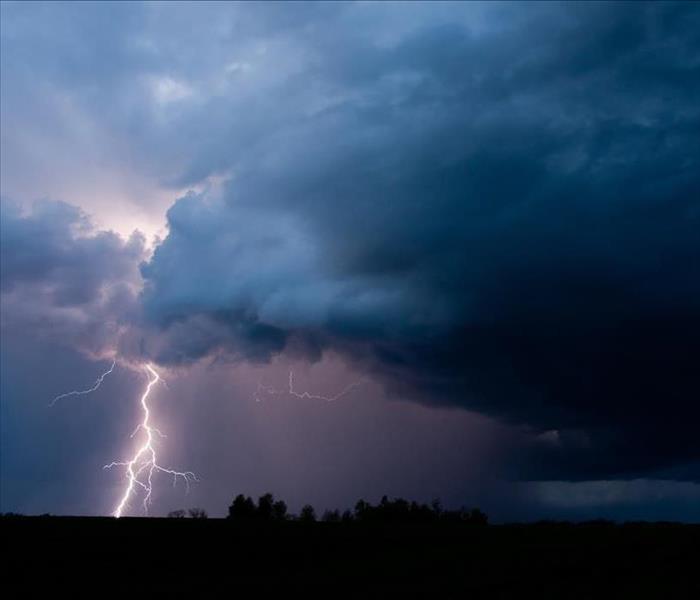Expectations of Severe Storm Damage
8/26/2021 (Permalink)
 To prevent some severe storm damage in your Emporia, VA, home, you must know the different risks your house can suffer.
To prevent some severe storm damage in your Emporia, VA, home, you must know the different risks your house can suffer.
Severe weather presents significant risks to manmade structures, including houses. As a homeowner, little can be done to prevent extreme weather and the tear-out it can lead to, but you can prepare for the potential damage to your house’s structure. If you reach out to a storm restoration company in Emporia, VA, the representatives can help you understand the four types of storm damage you might encounter. They can also help you develop a plan in case you experience such damage in the future.
1. Roof Damage
The most vulnerable surface of your home’s exterior is the roof. While it is solid, it is susceptible to wind damage. Depending on the style of roof and roofing materials, some houses will be more vulnerable than others.
Wind can lead to significant damage during a storm, but debris, hail, lightning, and more can result in damage to the roof as well. While there is little you can do to help prevent damage other than staying current with maintenance schedules and repairs, remediation companies can help you mitigate loss after a storm.
2. Water Damage
Severe weather can lead to storm surges, floods, and other types of water damage. The key to limiting the damage caused by rain and flooding is to remove the excess water as soon as possible. You will also need to tear out any damaged surfaces, like drywall, to limit the possibility of mold growth.
A storm restoration service is capable of handling all mitigation efforts. By dealing with water problems quickly, you can protect your insurance claim, giving yourself the best opportunity for claim approval.
3. Wind Damage
Severe weather often brings with it high winds. High winds alone are capable of breaking glass, damaging roofs, and causing structural loss. However, winds can also pick up debris, creating projectiles that can further bombard a structure.
You can purchase storm shutters to protect against high winds. Shutters are an excellent idea if you live in an area prone to hurricanes or other wind storms. You can also opt for a less permanent installation, such as a plywood sheet.
The primary goal of wind protection is to cover those areas that are most vulnerable to damage. For most properties, the vulnerable spaces are windows and glass doors.
4. Fire Damage
Many people underestimate the potential of a fire in the middle of a storm, but it is possible. Lightning accounts for many residential fires every year.
The best protection against a lightning fire is a lightning rod. Contrary to common assumptions, lightning rods do not attract lightning. Instead, they create a high point on your roof, making it a more likely target than your roof. If lightning strikes, its charge is carried through the rod and connecting cable down to the ground where it is safely dispersed.
Even if you have a lightning rod on your house, it is wise to install a few smoke detectors in the attic, garage, and upper floors of the house. Not all lightning fires start right after a strike; some take hours to present.
While storm damage often leads to tearing out to prevent secondary damage, there are some things you can do to reduce your risks of loss. Talking to professional mitigation companies or disaster response leaders can help.




 24/7 Emergency Service
24/7 Emergency Service